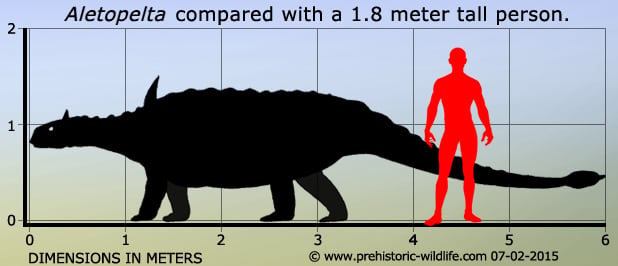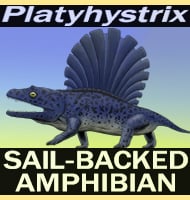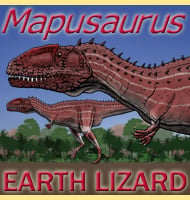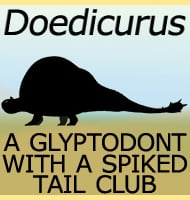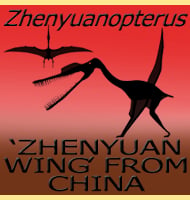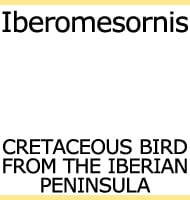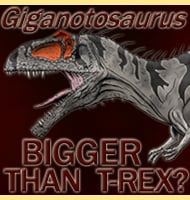In Depth
Once considered a possible nodosaurid, Aletopelta was confirmed as an ankylosaurid when it was formally described in 2001. This interpretation came about mainly from study of the osteoderm armour which is more like the armour of known ankylosaurs and less like that of nodosaurs. By extension Aletopelta would be assumed to have had a broader skull as well as a bony club on the end of the tail like in relative genera, though in Aletopelta these have so far not known to have been preserved.
The name Aletopelta means ‘wandering shield’ a reference to the fact that the Aletopelta holotype remains have actually travelled a long way since they first came to rest. The holotype remains of Aletopelta were located on the Peninsular Ranges Terrane, and accounting for seventy million years’ worth of continental drift Aletopelta would have actually lived much closer to what is now Mexico during the Cretaceous. In addition to this the holotype remains have been interpreted as being washed out to sea shortly after the animal died, perhaps with flood waters or a storm surge. When they finally settled on the bottom, they seem to have formed the basis for a miniature reef.
Further Reading
- Carlsbad ankylosaur (Ornithischia, Ankylosauria): an ankylosaurid and not a nodosaurid. - The Armored Dinosaurs. Indiana University Press, Bloomington 239-260. - T. L. Ford - J I Kirkland - 2001.
